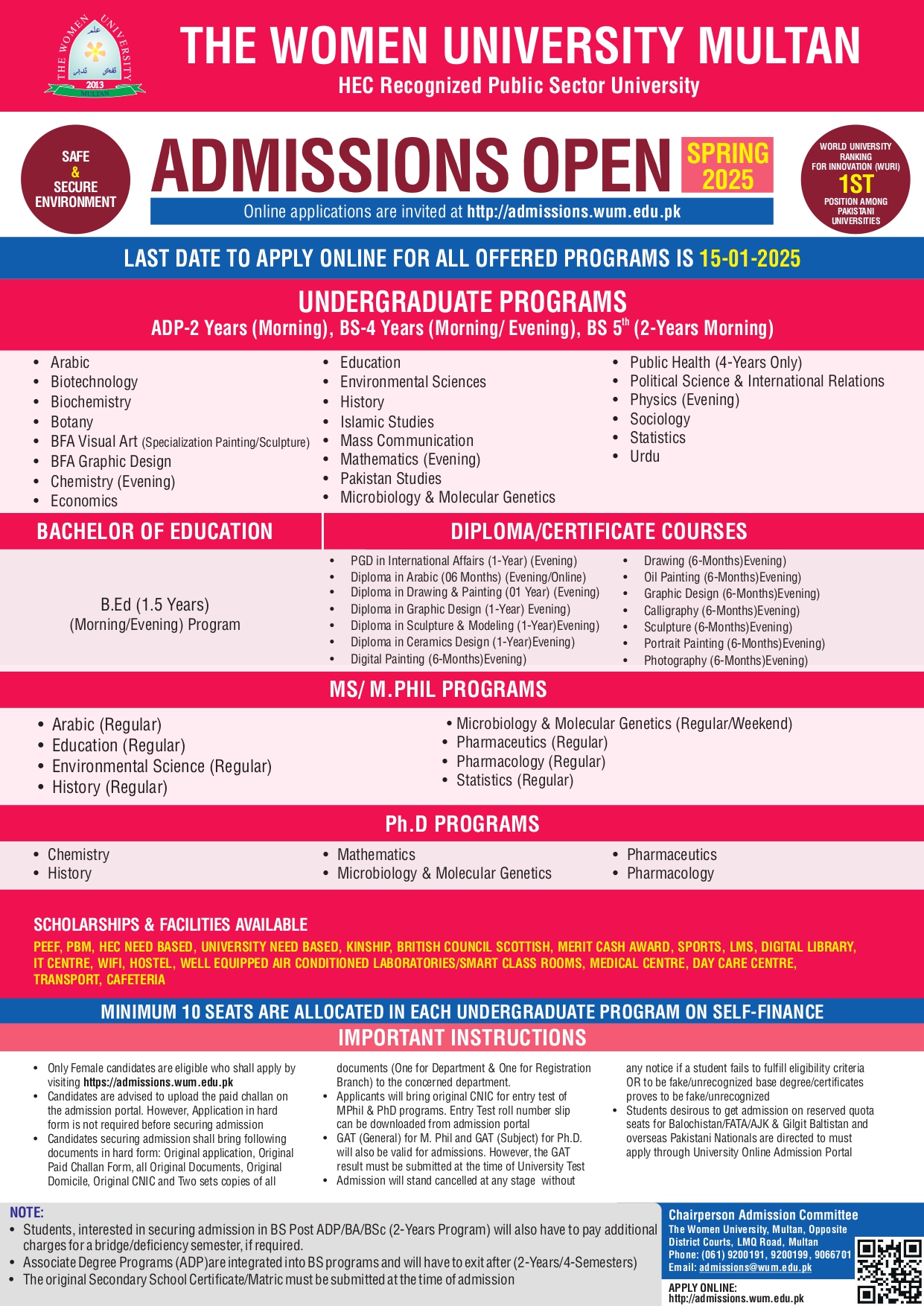One-day Seminar Organized by Institute of CS & IT, WUM on “React Native- A future driven technology”
React Native is a JavaScript framework for writing real, natively rendering mobile applications for iOS and Android. It’s based on React, Facebook’s JavaScript library for building user interfaces, but instead of targeting the browser, it targets mobile platforms. In other words: web developers can now write mobile applications that look and feel truly “native,” all from the comfort of a JavaScript library that we already know. Plus, because most of the code you write can be shared between platforms, React Native makes it easy to simultaneously develop for both Android and iOS. In this regard, the Institute of CS & IT invited Dr. Khawaja Tehseen Ahmed. Institute of CS & IT The Women University Multan under the leadership of Prof. Dr. Uzma Quraishi, Vice Chancellor organized a seminar on “React Native- A future driven technology” in Fatima Jinnah Hall, Katchery Campus, WUM. The seminar started with the recitation of verses from the Holy Quran. Dr. Khadija Kanwal with all faculty members, and the Director of the Institute of CS & IT, WUM formally welcomed the guests. Ms. Humera Batool Gill, lecturer CS & IT, WUM gave an overview of React Native followed by a presentation by Dr. Khawaja Tehseen Ahmed Associate Professor from the Computer Science Department Bahuddin Zakriya University Multan. He briefly describes the uses, strength, and its market share. In fact, this session paved the way to explore opportunities for students to make their place in the mobile app development market. In the last Director Dr. Khadija Kanwal presented a shield to Dr. Khwaja Tehseen Ahmed and appreciated the session for highlighting the opportunity of using React Native for students. Certificates are distributed among the faculty of CS & IT as well as other departments.














